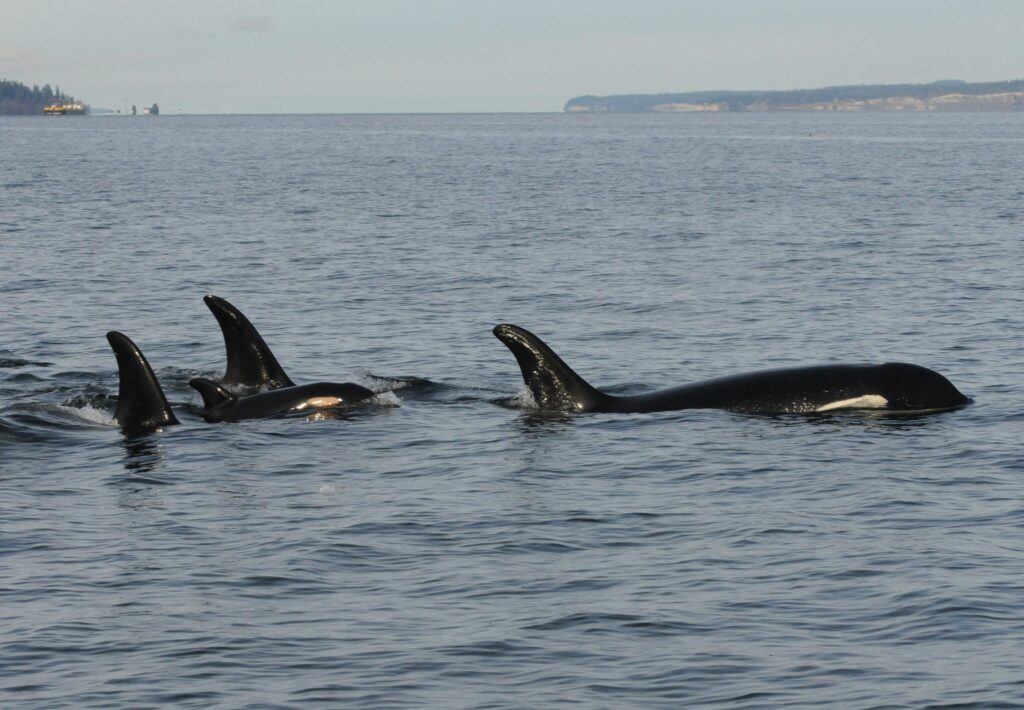The natural world often surprises us with instances of profound emotional expression, challenging traditional notions of animal behavior. Among such extraordinary cases is the unique grieving behavior exhibited by Tahlequah (J35), a southern resident killer whale, whose actions have captivated scientists and the public alike. Tahlequah’s repeated acts of mourning for her deceased calves highlight the depth of emotional and social bonds in orcas, making her story both poignant and a stark reminder of the fragility of her species.
A Mother’s Grief
Tahlequah first garnered international attention in 2018 when she carried the body of her dead newborn calf for 17 days over a journey exceeding 1,000 miles across the Salish Sea. This act of prolonged mourning, unprecedented in its duration, was widely interpreted as a manifestation of grief. In 2024, Tahlequah was again observed carrying another deceased calf, underscoring the unique nature of her behavior and her deep maternal instincts.
While mourning behaviors have been documented in several animal species, including elephants and dolphins, the prolonged carrying of a dead offspring by Tahlequah is exceptional. It underscores the cognitive complexity and emotional depth of killer whales, particularly within the critically endangered southern resident population.
Social and Emotional Complexity in Orcas
Killer whales are highly social and intelligent marine mammals known for their complex matrilineal structures. Female orcas play pivotal roles within pods, and their bonds with offspring are central to their social dynamics. Tahlequah’s actions reflect not only her maternal instincts but also the importance of calves to the future of her pod and species.
Research suggests that orcas, like other cetaceans, possess advanced cognitive abilities, including memory, problem-solving, and emotional processing. Tahlequah’s grief-like behavior aligns with these findings, providing a window into the emotional lives of these marine mammals. Such behaviors challenge the anthropocentric view that grief and mourning are uniquely human experiences.
Ecological and Conservation Implications
Tahlequah’s story is not just a testament to individual behavior but also a reflection of a species in crisis. The southern resident killer whales are critically endangered, with their population declining to just 73 individuals as of recent assessments. Among them, only 23 are breeding females, making each new calf—and its survival—crucial for the population’s recovery.
Tahlequah’s repeated loss of female calves is particularly devastating. Female orcas are vital for the continuation of matrilineal lines and play a central role in pod leadership and cohesion. Her grief highlights the broader challenges facing her species, including prey scarcity, environmental degradation, and human-induced threats such as noise pollution and habitat destruction.
Conservation and Awareness
Tahlequah’s behavior has brought international attention to the plight of the southern resident killer whales. Conservation groups and scientists have called for urgent measures to protect this critically endangered population. Recommendations include:
- Restoring populations of Chinook salmon, their primary prey.
- Reducing marine traffic and noise pollution to improve their habitat.
- Enforcing legal protections, such as emergency orders, to safeguard their survival.
In Canada, emergency orders have been invoked in the past to protect species on the brink of extirpation, such as the greater sage-grouse and the western chorus frog. Conservationists argue that similar measures are needed for the southern resident killer whales to prevent further decline.
Lessons from Tahlequah’s Grief
Tahlequah’s actions resonate deeply, reminding us of the emotional lives of animals and the interconnectedness of ecosystems. Her grief is a powerful narrative that underscores the urgent need for conservation efforts. It challenges us to rethink our relationship with nature, recognizing the emotional and social complexities of species we share the planet with.
The story of Tahlequah is both heart-wrenching and inspiring. It reflects the resilience of a mother’s bond and the fragile state of our marine ecosystems. As we strive to protect endangered species like the southern resident killer whales, let us also honor their stories by fostering a deeper understanding and commitment to preserving the natural world.
Also Read: Satellite Tagging of Ganges Dolphin
Disclaimer
This article is for educational purposes, focusing on the relevance of the topic for UPSC aspirants. Students should stay updated on further developments and refer to official sources for comprehensive preparation.
Follow Fusion IAS

